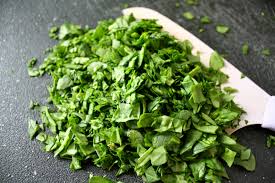The Marvel Of Millets
-
Last Updated on :
- April 19, 2024 At 03:04 PM
Millets are a viable, wholesome, and underrated food source with a rich tradition and enormous potential. #Millets

“We might be little, but we are powerful. We grow where some cannot. We cultivate soils and ecosystems, and we supply food for everybody. What are we?”
Millets!
Millets are a broad category of small-grained, dryland cereals that include foxtail, barnyard, and fonio, among others. Millets, like whole grains, provide an excellent number of important elements.
Millets offer numerous health advantages. Millets are a nutritional powerhouse, helping to manage diabetes and cholesterol as well as digestive and cleansing functions.
Furthermore, millets are beneficial for gluten sensitivity and celiac disease. Millets, a traditional superfood, are gluten-free and abundant in protein, fiber, and complex carbs.
There are several varieties of millets in India. Each millets variety has its own set of advantages. In India, the most prevalent millets include Jowar, Bajra, Ragi, Samai, Kuttu, Rajgira, and others.
They are neither legumes nor pulses; what are millets? Why has everyone become so infatuated with them? If these are the questions on your mind, you're in for an educational (and entertaining) read.
Health Benefits of Millets
Millets are a fantastic source of vitamins and minerals that improve general health indices. The following are some health advantages of millets:
Millets help regulate blood sugar.
Millets, with their low glycemic index, are a great meal to ingest to prevent diabetes from developing in non-diabetic people. It is very useful in managing type 2 diabetes. Are you concerned that Dosas may make you fat? Try these millets dosa recipes at Planmeal.
Millets help control cholesterol levels.
Millets provide vital fats in sufficient quantities to provide our bodies with appropriate fat. This helps to avoid extra fat buildup on the muscles. It prevents high cholesterol, heart attacks, and other heart-related conditions. Millets are a superior option to pea grains.
Millets are easily digestible.
Millets are gluten-free. Gluten is a protein present in wheat that many people cannot digest properly. Millets provide balanced carbs, proteins, and fats, making them an excellent choice.
Millets are an unparalleled source of nutrition.
Millets include important nutrients such as copper, magnesium, phosphorus, and manganese. These are good for leading a healthy lifestyle. A well-balanced diet rich in nutrients can also help reduce the risk of heart disease and other life-threatening disorders such as PCOS, obesity, and Type 2 diabetes, among others.
Millets help manage the appetite.
Many carbs, such as rice and wheat, are easily digested after consumption, leaving an individual hungry within a few hours of eating. This causes people to turn to unhealthy foods to satisfy their hunger. Millets have tougher structures that do not break down easily in the digestive system. They keep you fuller for longer, with fewer cravings.
Are millets for everyone?
Yes! Almost everyone can reap the benefits of millets. Millets help manage Type 2 diabetes, reduce weight, and even treat digestive issues. Millets are a long-lost superfood that has come into the limelight recently.
So, whether your goal is building lean muscle, stronger immunity, better metabolism, or shedding a few pounds, adding millets makes the process easier.
Government Efforts to Increase Millets Production
Despite its numerous benefits, millets is only used by traditional customers, such as tribal populations. Consumers have few options for ready-to-eat millet-based products.
Millets have lately garnered attention, and efforts are underway to produce simple and value-added manufactured goods from them. Millets like jowar, bajra, ragi, and others are a staple for many households in arid and mountainous areas. As a result, it has been suggested that the Public Distribution System incorporate millet into its food supply.
The government has identified millet as a vital element of the food chain. The NFSM plans to expand food grain production by 25 million metric tons, with millets accounting for 2 million metric tons or 8% of the total.
The significance of millets for kids
Millets are abundant in carbs, making them an excellent source of energy for busy children.
Millets include a high concentration of dietary fiber, which promotes digestive health and reduces constipation.
Millets include a variety of vitamins and minerals, including iron, magnesium, phosphorus, and B vitamins, all of which are essential for proper growth.
Gluten-free: Millets are naturally gluten-free, which makes them an excellent choice for children who have celiac disease or gluten sensitivity.
Millets are versatile and may be used in a range of recipes, including porridge, breads, and cereals, making them a simple addition to children's diets.
Customize your meal plans and include millets in your diet today. If it sounds like too much of a task, switch to Planmeal now.
- December 01, 2022 At 07:15 AM
Blog Categories
meal planning tips to improve your weekly menu plan, to help you save time, money and achieve health goals.

meal Planning Tip # 1
Shopping day and Shopping list.
Choose a shopping day and make a shopping list.









Want to comment on "The Marvel of Millets"